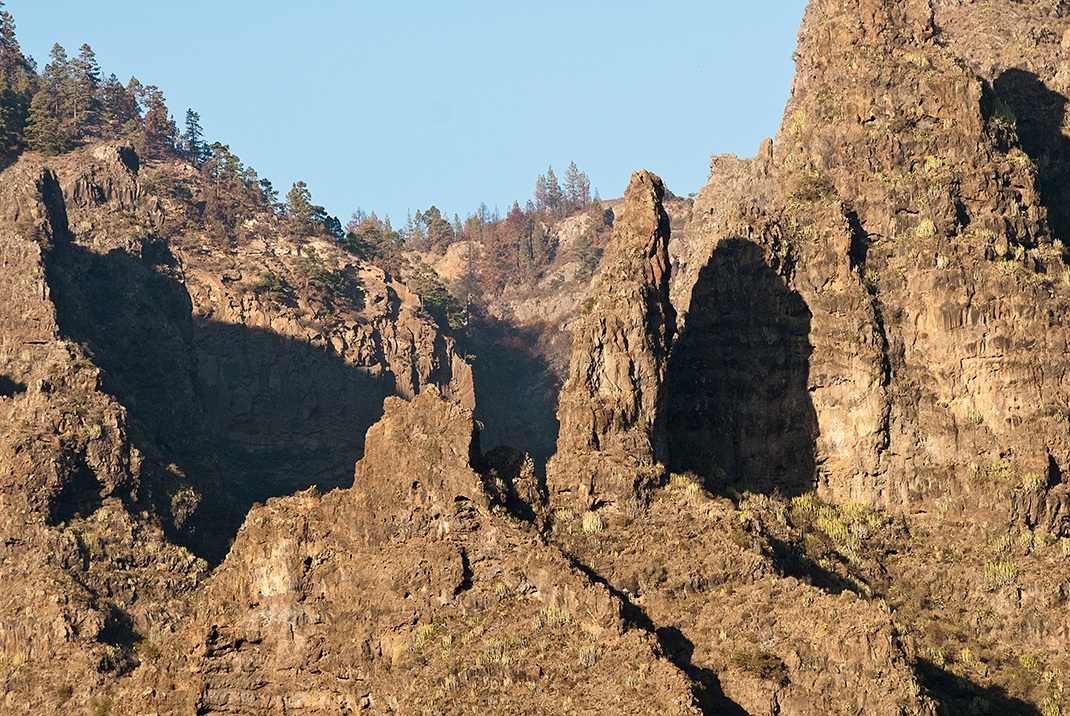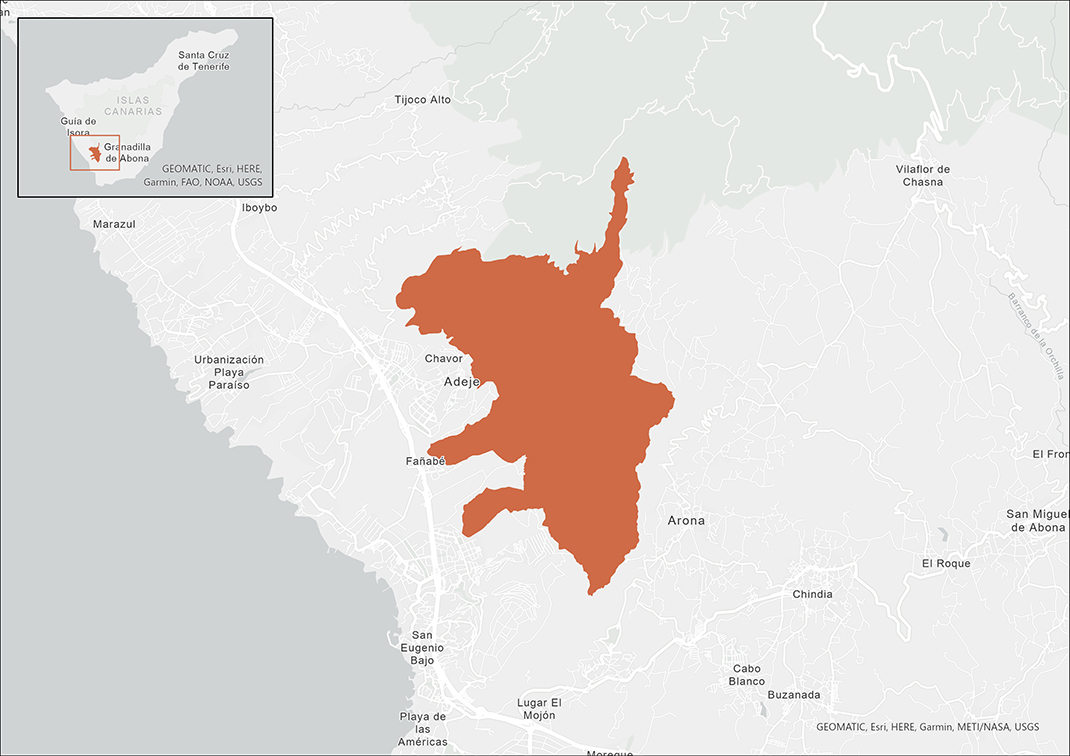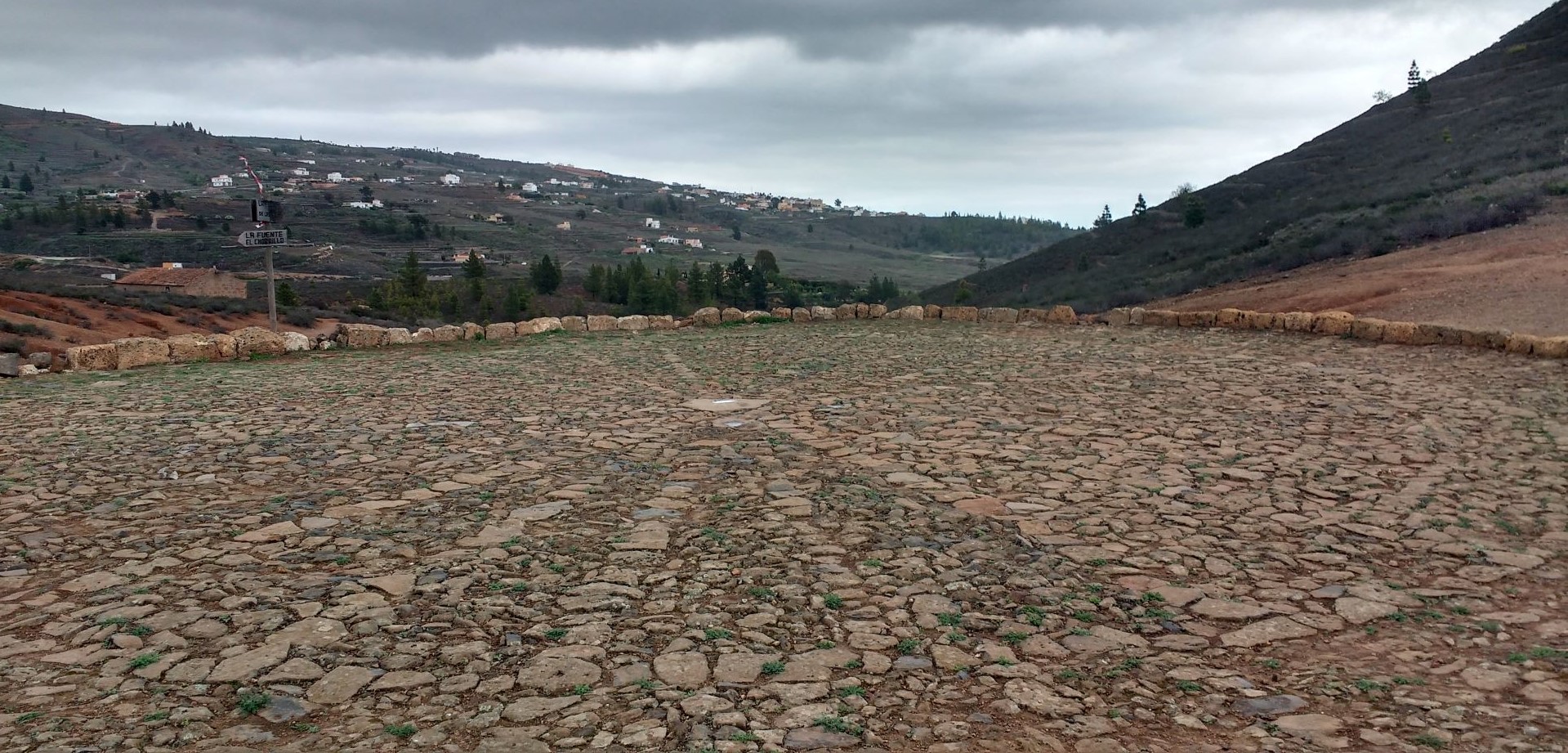Plan your next adventure
Tailor your own route along Tenerife’s trails quickly and easily..
Go to planner
The Barranco del Infierno Special Nature Reserve, in the south-west of Tenerife, is home to a water resource that is of particular importance for the rest of the island.
Recommended time to visit: Spring
The landscape of the reserve is dominated by striking geomorphological features such as Roque del Conde and Roque Imoque, and the ravines themselves: Barranco del Infierno and Barranco del Rey.
The continuous supply of water provided by Barranco del Infierno favoured the first human settlements on the island. It is for this reason that the village of Adeje is situated in this very spot.
Most of the reserve is formed by volcanic rocks from the same period as Teno and Anaga, about 7 million years ago.It thus forms part of the first areas that emerged from the sea when Tenerife was in its early stages of development.
This age explains the geomorphology of the terrain, eroded by the action of water over all that time. This has given rise to steep slopes and deep ravines and has exposed outcrops and dykes that help us today to understand the formation of the island.

The reserve has different layers of vegetation, from 100 to 1300 m altitude, which makes its flora particularly rich.
Around 40% of its plants are endemic to the Canary Islands and 8% to Tenerife. There is also a local endemic plant in the reserve, the chajorra de Adeje (Sideritisinfernalis).
The list of protected plants that grow in this nature reserve is vast. Within it you can find the cerraja de Adeje (Sonchus fauces-orci), bejequillo peludo de Tenerife (Aeonium smithii), Adeje tajinaste (Echium sventenii), colderriscoescabrosa (Crambescaberrima), moralito (Rhamnus integrifolia) and the numerous willows or sauces canarios (Salix canariensis) that grow in the beds of the ravines.
Notable among the invertebrate fauna, which is very rich in species and endemic species, are a spider (Dysderaguayota), a butterfly called the Canary brimstone (Gonepteryxcleobule), the longicornio del cardón (Lepromorisgibba), cucarro del cardón (Pelleascrotchi), picudo del cardón (Mesites fusiformis fusiformis) and the Barbary spurge hawk-moth (Hyles tithymalitithymali).
Among the birds that nest within the boundaries of the reserve, special mention should be made of the blue chaffinch, great spotted woodpecker, rock sparrow, Barbary falcon, buzzard, stone-curlew, raven, and sea birds such as Scopoli’s shearwater and Bulwer’s petrel, which breed here every year.
Among the reptiles you will find the three native species that are typical of the rest of the island – Tenerife lizard, Tenerife skink and Tenerife gecko – all of which are endemic to the Canary Islands.
The only native mammals in the reserve are three bats: lesser noctule, common in the pine forest areas, European free-tailed bat and Madeira pipistrelle.

1,843.1 ha (0.9% of the island).
Cerraja de Adeje (Sonchus fauces-orci), bejequillo peludo de Tenerife (Aeonium smithii), Adeje tajinaste (Echium sventenii), colderriscoescabrosa (Crambescaberrima), moralito (Rhamnus integrifolia), willow or sauce canario (Salix canariensis), Canary brimstone (Gonepteryxcleobule), longicornio del cardón (Lepromorisgibba), cucarro del cardón (Pelleascrotchi), picudo del cardón (Mesites fusiformis fusiformis), Barbary spurge hawk-moth (Hyles tithymalitithymali), blue chaffinch, great spotted woodpecker, rock sparrow, Barbary falcon, buzzard, stone-curlew, raven, Tenerife lizard, Madeira pipistrelle.
Ravine, pine forest, tabaibal and cardonal (Euphorbia), thermophilic plants, rocky.
Roque del Conde, Roque Imoque, Roque Abinque, Barranco del Infierno, Barranco del Rey, Barranco de Fañabé, Barranco del Agua.
The Barranco del Infierno trail has limited capacity, so access is restricted and subject to payment.
Therefore, if you wish to walk this route, please remember to make your reservation in advance.
You should bear in mind that under certain weather conditions, such as rain or strong winds, the ravine is dangerous due to frequent landslides.For this reason, when these adverse conditions occur, access to the ravine is closed.
To consult permits for use and updated regulations for this Protected Natural Area, visit the official website of the Government of the Canary Islands.

These are some of the points of interest you can find along this route.

Threshing Floor, Los Brezos
Beautiful, well-known threshing floor on the slopes of Roque de Imoque and Los Brezos.
...Tailor your own route along Tenerife’s trails quickly and easily..
Go to planner